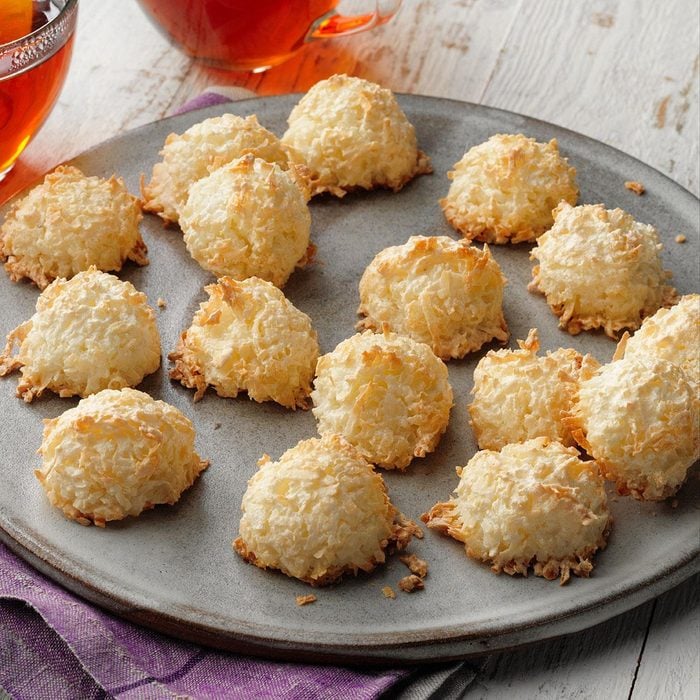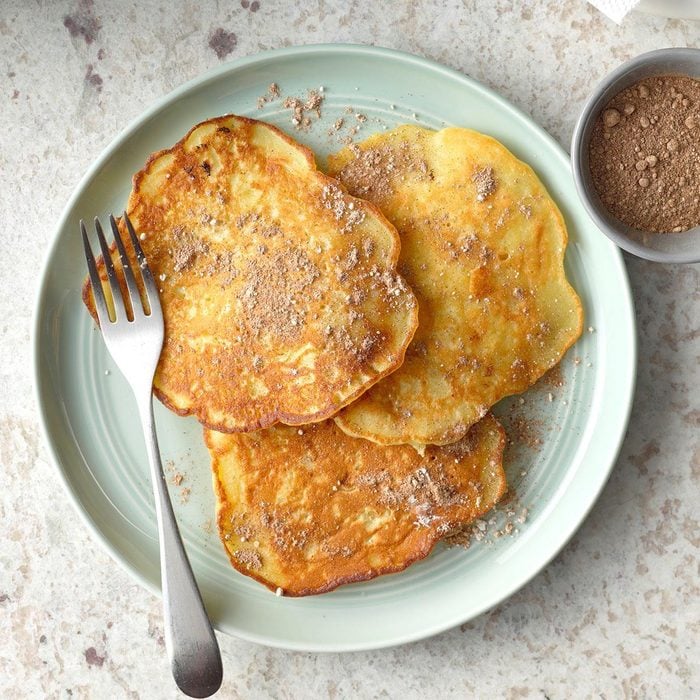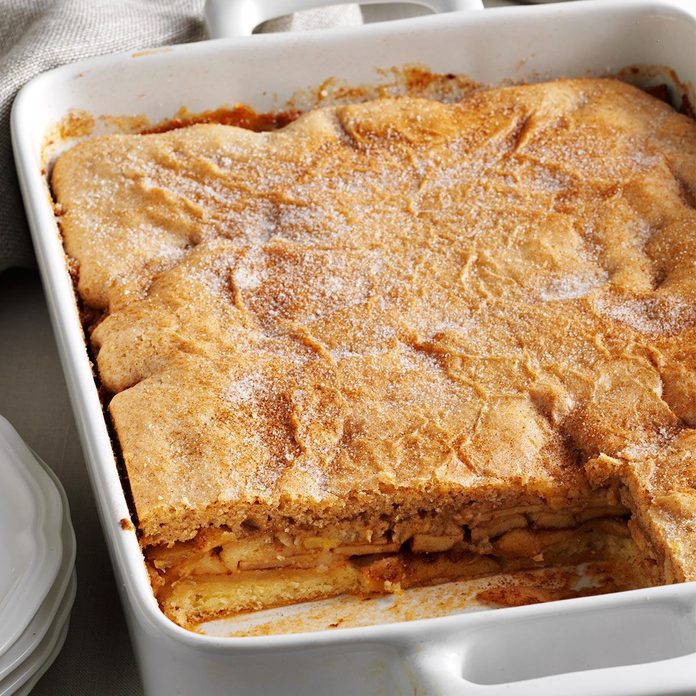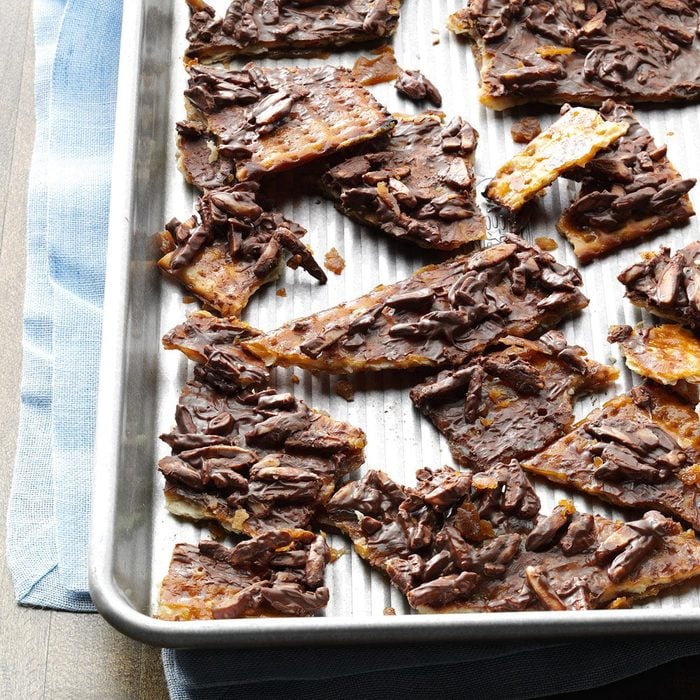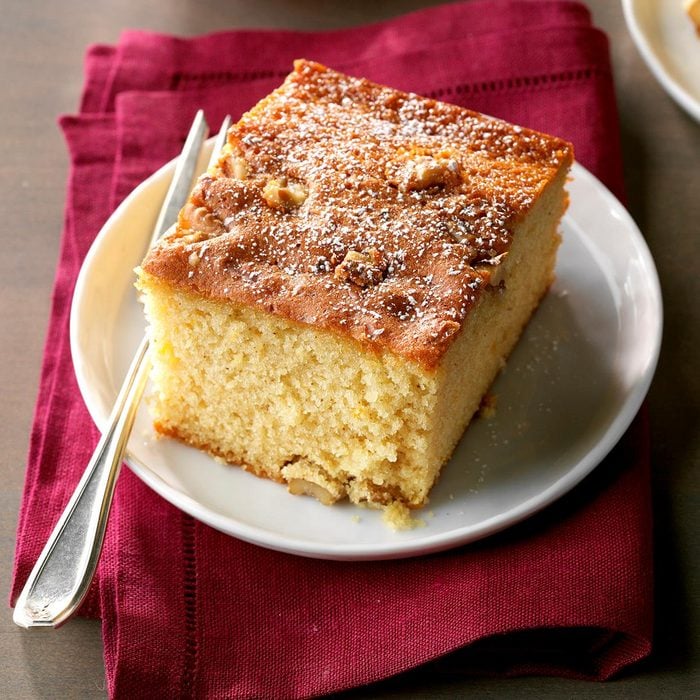For most of us, the start of a new year is the chance to go after our goals, dreams and ambitions on the best note possible. Rosh Hashanah, the Jewish New Year, is about doing that literally, with primarily sweet food served to usher in a sweet year of blessings and abundance. The foods on the table are richly symbolic and meaningful. Whether you’re hosting or attending a supper, check out our guide to Jewish foods for Rosh Hashanah. We have also curated a list of the best Jewish cookbooks so that you have recipes handy for holiday comfort foods, easy kosher meals, Israeli dishes and more!
Apples and Honey
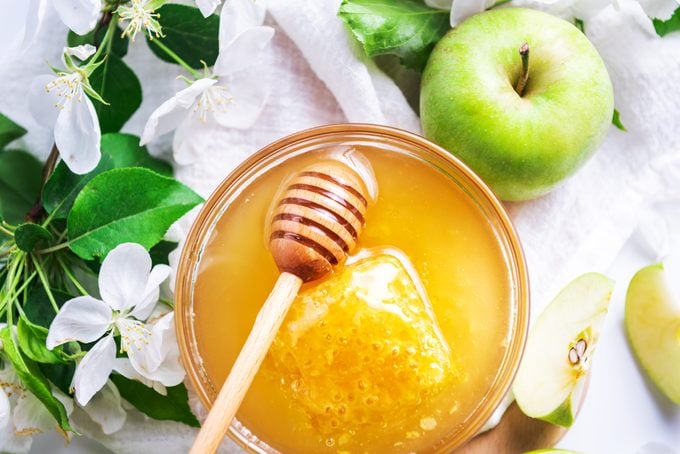 HUIZENG HU/Getty Images
HUIZENG HU/Getty Images
Apples and honey are almost synonymous with Rosh Hashanah. One reason is practical: most varieties of apples are hardy in many climates, whether harsh or mild, so they could make appearances at meals no matter the season. There’s also a metaphorical aspect. Some fruit trees shade their produce with new leaves, but apple trees offer their fruit no such protection. Being different could make these trees vulnerable, yet they thrive regardless—a sentiment carried by the Jewish people.
The tradition of dipping apples in honey dates back hundreds of years and was mentioned in the writings of Rabbi Jacob ben Asher, who codified Jewish law in the 1300s. Today, many tables will showcase apple honey cakes. (We also love these simple baked apples with honey.)
Pomegranate
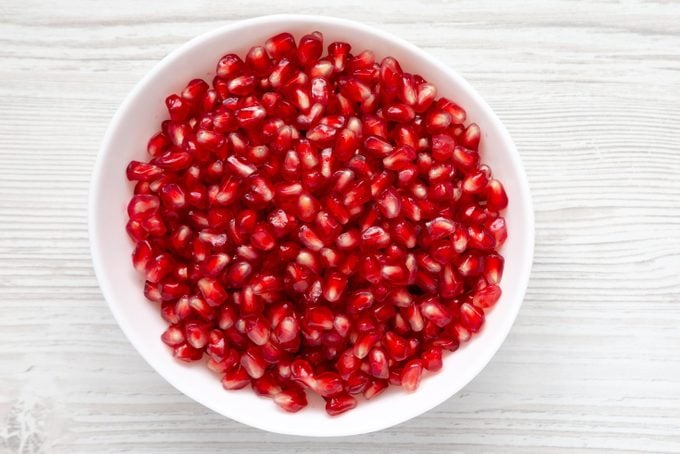 Liudmyla Chuhunova/Getty Images
Liudmyla Chuhunova/Getty Images
The second night of Rosh Hashanah is time to enjoy the “new fruit,” or seasonal produce that hasn’t been tasted since the start of the season. The fruit symbolizes gratefulness for being alive and allowing us to taste all the delicious fruit the world has to offer.
The most typical new fruit is the pomegranate for its biblical significance—the Land of Israel was known for its pomegranates, and it’s one of the “seven species” of Israel—and for its abundant seeds. It’s hoped that good deeds and actions will be just as copious! Learn the easiest way to deseed a pomegranate. Then sprinkle the seeds on this Rosh Hashanah green bean recipe.
Challah
ⓘ
Another of the most recognizable features of a Rosh Hashanah meal, this braided egg bread is typically served on Shabbat. During Rosh Hashanah, the bread is shaped into spirals or rounds to symbolize continuity. The challah is often dipped in honey before eating, and shared around the table. We’ll show you how to make challah and nail that braiding step.
Honey Cake
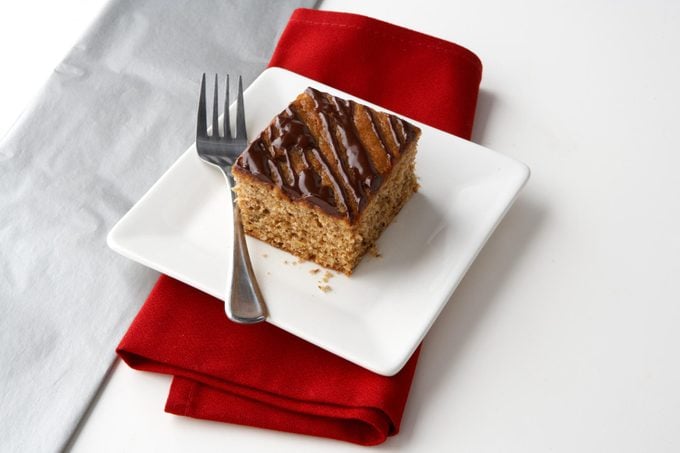 TMB Studio
TMB Studio
Like challah, honey cakes are symbolic of the desire for a sweet, positive upcoming year. Most families have their own generations-old recipes, but it usually includes spices such as cloves, cinnamon and allspice, with some variations calling for coffee, tea or rum mixed in for greater flavor. Our honey cake recipe adds walnuts to add a depth of flavor to the spice.
Fish
 fortyforks/Getty Images
fortyforks/Getty Images
Given that Rosh Hashanah translates to “head of the year,” a head has to make an appearance somewhere on the menu. While this may include the head of a sheep or rooster, it’s often as simple as a whole roast fish (vegetarians can swap in a head of cabbage or garlic). As a bonus, fish symbolize fertility and abundance. Vigilant, ever-swimming fish promote a new year of awareness and hard work.
Couscous with Seven Vegetables
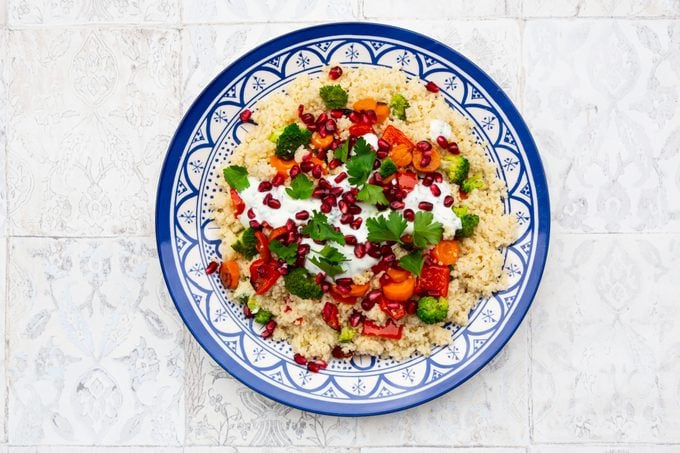 Westend61/Getty Images
Westend61/Getty Images
This is one of the few savory options you’ll see on the table. The multitude of couscous beads represent the number of blessings you hope to have, while the number seven is considered fortuitous, as the world was created in seven days.
Leeks, Chard or Spinach
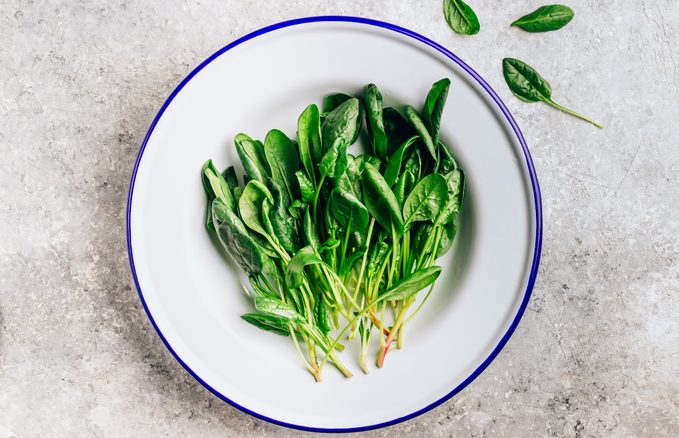 Irina Kozmova/Getty Images
Irina Kozmova/Getty Images
Like most Rosh Hashanah foods, the symbolism is tied to a pun on its Hebrew name—in this case, a close cousin of the word karet, which translates to “cut.” Eating leeks means hoping those who wish us ill will instead be cut off and their bad intentions punished.
Dates
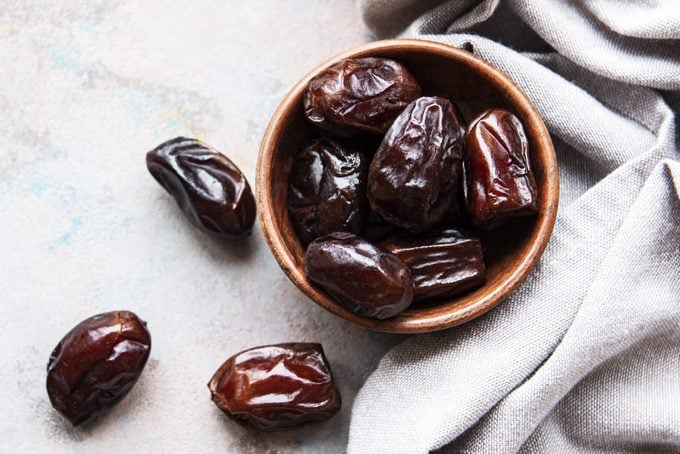 Dan Iancu / 500px/Getty Images
Dan Iancu / 500px/Getty Images
Sweet dates, another of the seven species of Israel, may not seem to have much in common with leeks. But the Hebrew name, t’marim, also relates to punishing enemies—in this case, finishing them off. (Note that some rabbis believe that eating these foods actually symbolizes ending our own prejudices.) On a happier note, when the Torah refers to Israel as “a land flowing with milk and honey,” that means date honey.
Whether you’re cooking heirloom family recipes or joining loved ones for your first Rosh Hashanah, it’s a time to honor the past and welcome a year as sweet as the honey you’ll use to smother your challah.
Jewish Desserts Everyone Needs to Try
Rugelach
These bite-sized cookies are filled with spicy cinnamon and nuts. You can also find other
rugelach varieties like
raspberry,
cranberry and
chocolate.
Don't forget to pick up one of these
Jewish cookbooks for more amazing desserts like
cinnamon babka and other
traditional Jewish recipes.
Go to Recipe
Chocolate BabkaBabka is a dense braided bread stuffed with sweet fillings like chocolate, cinnamon sugar, apples or raisins. You can thank Jewish grandmothers for its creation, as they would often twist leftover scraps of
challah with seeds and nuts for a handy Sabbath snack.
Apple Cake for PassoverThis cake is perfect for seders when you want to keep
Kosher for Passover. This recipe uses matzo cake meal as a base.
Chocolate-Stuffed Dreidel CookiesThese cookies are not only decorated to suit the holidays, but they’re filled with a chocolate surprise that everyone will enjoy. To create perfect decorations, learn
how to use a piping bag by practicing your design on waxed paper.
Jewish Apple CakeOriginating from Poland, this traditional Jewish dessert is typically served during Rosh Hashanah. You can also serve this dense apple cake with a cup of coffee for breakfast.
Passover MacaroonsThese flourless coconut cookies are particularly popular during Passover, but they're delicious enough to enjoy all year.
Vanilla & Cinnamon-Kissed Apple LatkesThis sweetened version of the traditional potato pancakes combines cinnamon, orange juice, vanilla extract and apples. Top them off with cinnamon sugar and they’ll be a dessert you can’t stop thinking about!
Hanukkah CookiesThese cookies are perfect for celebrating Hanukkah. Made with cream cheese, these cookies have a richness that only gets richer with its buttercream frosting. You can pipe on frosting decorations or top with holiday sprinkles. And these cookies are just the start! Be sure to check out more
Hanukkah desserts.
Chocolate-Covered MatzoThis treat will easily become one of your favorite
Passover desserts. The recipe takes less than 30 minutes to make and guests won’t be able to resist the chocolate-covered crackers. Make it your own by adding toppings like sprinkles or nuts.
Passover Rainbow CookiesShannon Sarna, a home cook and editor at
The Nosher, shares her family's most beloved dessert:
rainbow cookies. These classic New York treats are traditionally served in synagogues and at Jewish celebrations, but actually have Italian roots. To make, you’ll bake three thin cakes, spread jam between them and coat with smooth melted chocolate.
SufganiyotYou’ll like these Hanukkah doughnuts a "hole" lot. Filled with raspberries and topped with confectioners’ sugar, you’ll definitely want to grab seconds of this dessert. If you’re a chocolate lover, give this recipe a creative spin by using a Nutella filling.
Chunky Apple-Cinnamon CakeThis recipe is perfect for when you have extra apples lying around or when you’re looking for something easier to make than an apple pie. Packed with flavor, this cake incorporates orange juice, vanilla extract, brown sugar and cinnamon to make it worthy of any special occasion.
Molly’s Sweet and Spicy Tzimmes CakeThis rich cake is made with a variety of fruits and vegetables like carrots, cranberries, apples and sweet potatoes for sweetness and plenty of spices to give it a little kick. Best served after a
traditional Jewish dish, this makes the perfect dessert to have for Rosh Hashanah.
 istetiana/Getty Images
istetiana/Getty ImagesEgg Creams
An egg cream is an iconic Jewish drink. This fizzy, frothy drink is said to have been created in the 1900s by Louis Auster, a Jewish candy store owner in Brooklyn, New York. Interestingly, the drink contains no eggs—just 1/2 cup milk, 1 cup carbonated water and 2 tablespoons chocolate syrup. (Purists use the brand Fox's U-bet!)
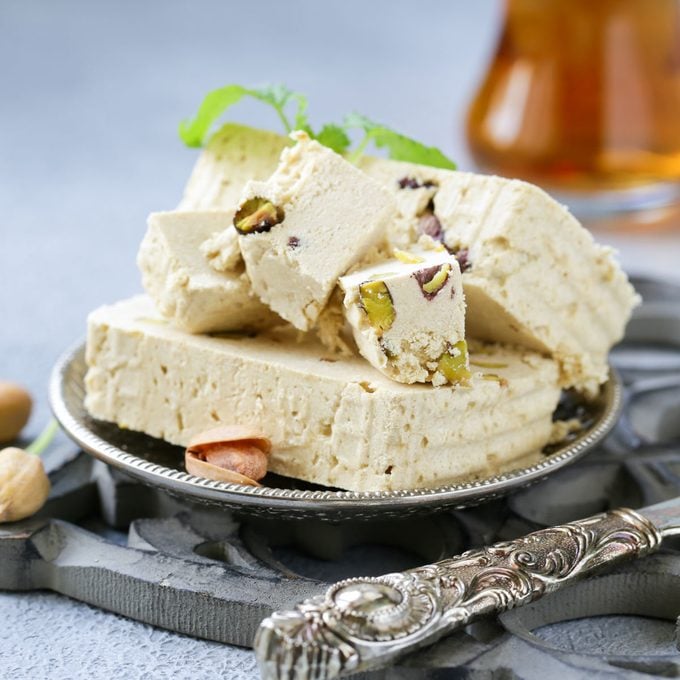 olgakr/Getty Images
olgakr/Getty Images
Halva is a traditional fudge-like confection made with tahini (sesame seed paste), sugar, spices and nuts. For the best flavor, be sure to
toast the nuts first!
Go to Recipe
Chocolate Chip Mandelbrot CookiesLiterally meaning “almond bread,” this twice-baked cookie consists of almonds, orange zest and chocolate chips for a modern version of this 19th century dessert. Serve it with a cup of hot chocolate or coffee and you won’t be able to resist dunking the cookies in for a sweet treat.
Lemon Poppy Seed CakeThis uniquely delicious cake is often seen during Purim because the Yiddish word for poppy seed, mohn, is similar to the name of the villain of the Purim story, Haman. It can be in the form of a loaf, a Bundt cake or even a towering layer cake.
Matzo ToffeeThere's more than one way to matzo! Matzo crackers are topped with buttery caramel, chocolate and slivered almonds and then baked to perfection.
Walnut Honey CakeThis cake is melt-in-your-mouth delicious. Light and fluffy, this cake doesn’t skimp on flavor with ingredients like orange juice, ginger, cinnamon and walnuts. You can even skip the frosting and get away with a light dusting of confectioners’ sugar.
Homemade GeltWhat's a game of dreidel without gelt? These waxy chocolate coins wrapped in shiny gold foil have a rich history and are a staple during Hanukkah, especially for kids. You can easily find store-bought gelt or make homemade gelt when you prepare other recipes for Hanukkah.



































